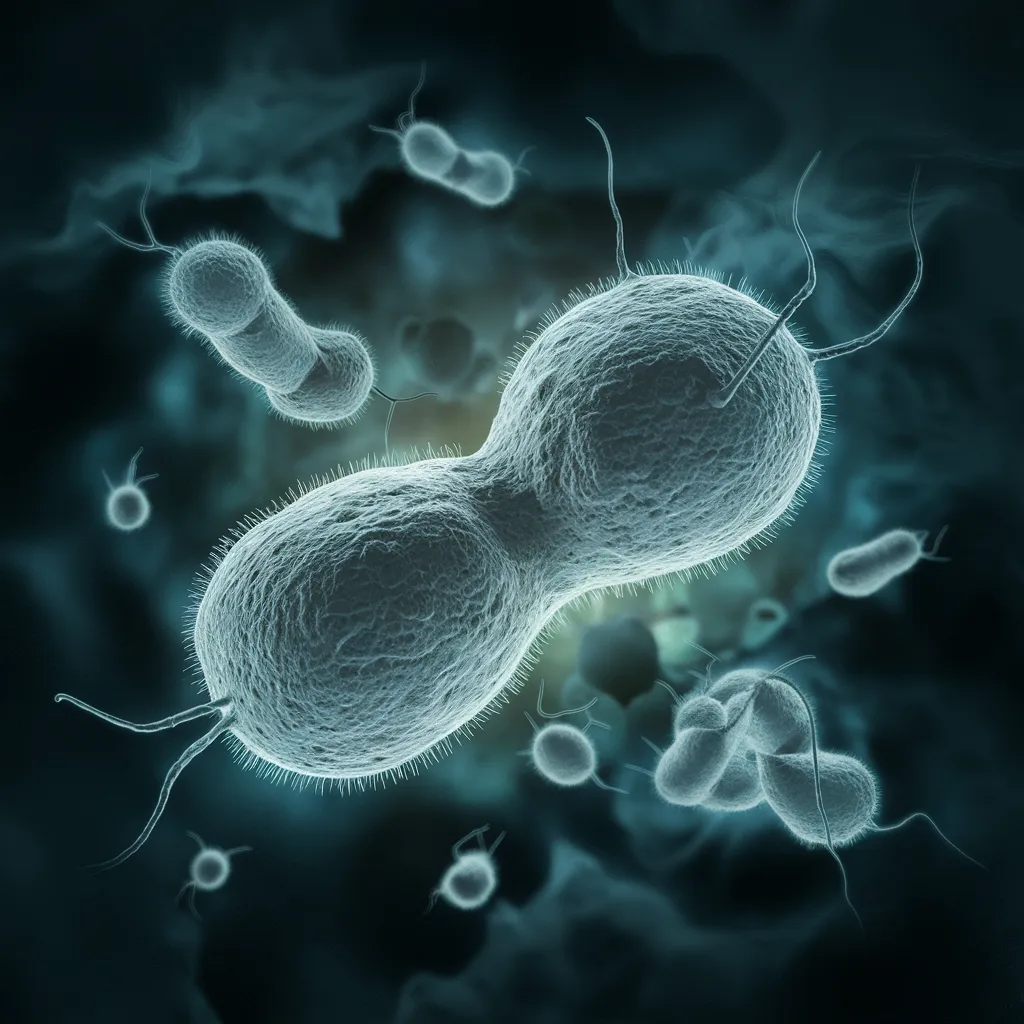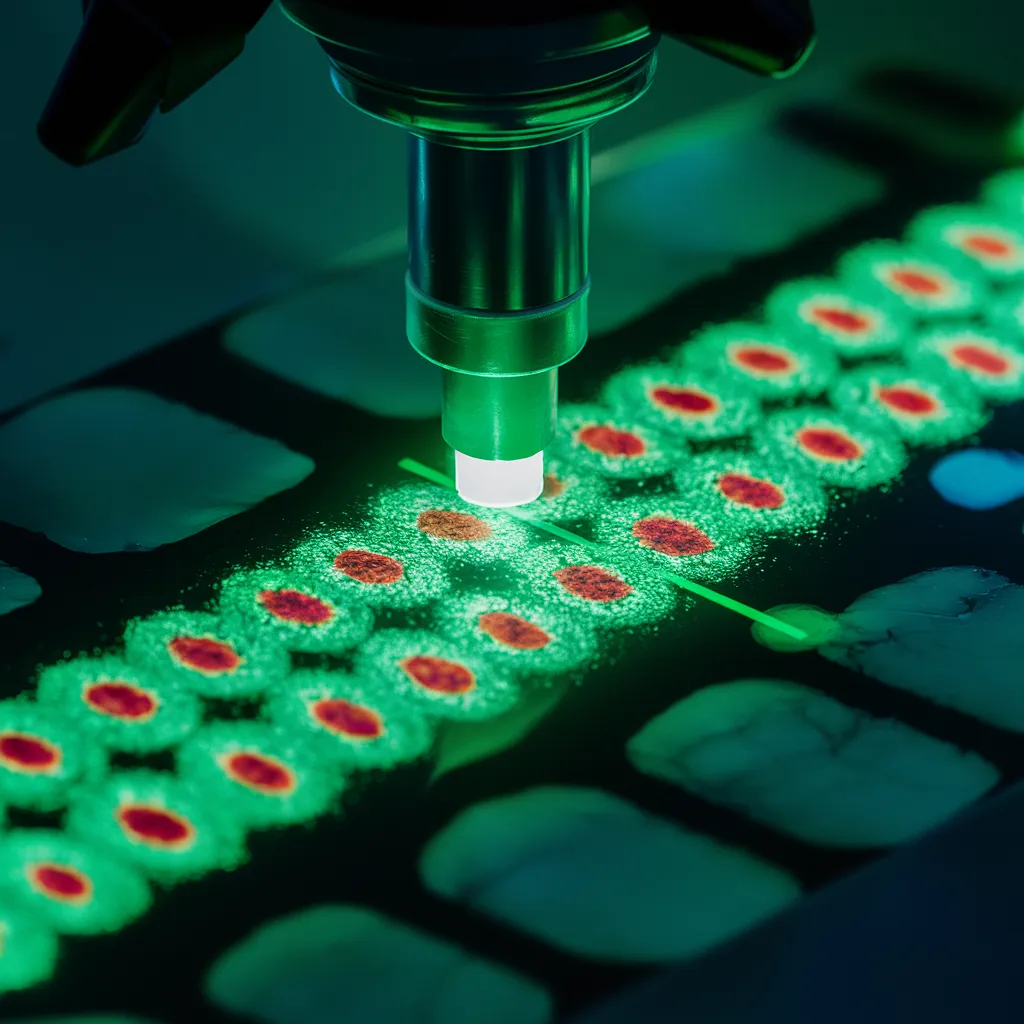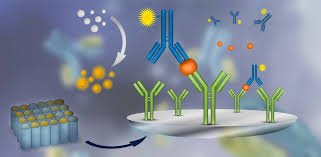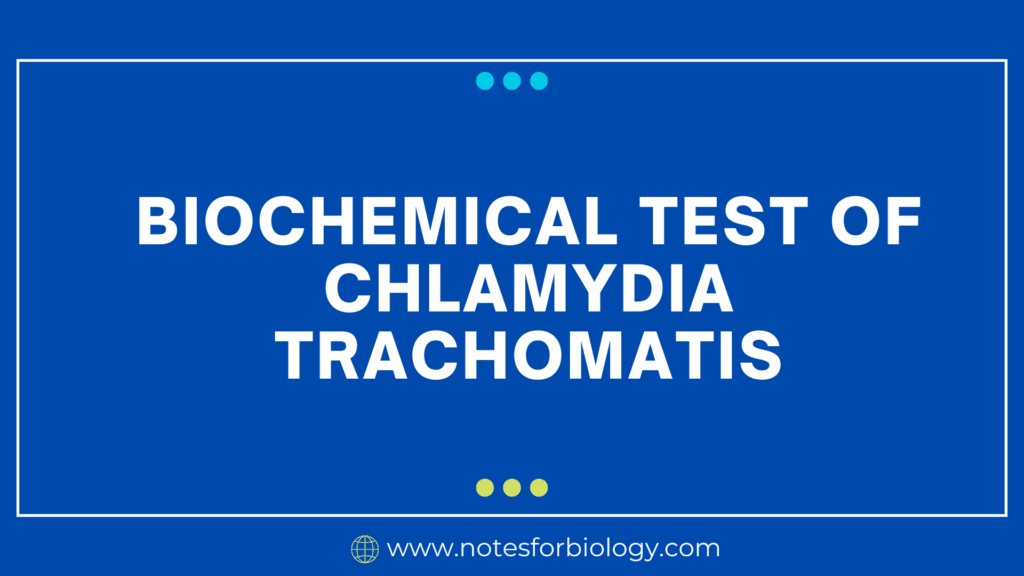Chlamydia trachomatis is a unique bacterium that must be identified using specific procedures since it is an obligate intracellular pathogen, which means it can only replicate within host cells. Because of its peculiar biology, C. trachomatis cannot be tested using traditional biochemical methods used on other bacteria. Instead, specific assays and molecular procedures are required for detection and identification.
Table of Contents
What is Biochemical Test of Chlamydia trachomatis?
Chlamydia trachomatis is an obligate intracellular bacterium, routine biochemical assays used to identify free-living microorganisms are ineffective. Instead, it is detected and identified using a combination of specialized approaches based on its intracellular lifestyle, distinct structural components, and molecular biology. A biochemical test for Chlamydia trachomatis consists of particular procedures developed to detect the presence of this bacterium based on its unique biochemical features.

Diagnostic Techniques for Chlamydia trachomatis
Direct Fluorescent Antibody (DFA) Test
Principle: Uses fluorescently labeled antibodies specific to Chlamydia trachomatis antigens.
Procedure: Specimens (e.g., swabs from the cervix, urethra, or conjunctiva) are fixed on a glass slide and stained with fluorescein-labeled monoclonal antibodies. The slide is then examined under a fluorescence microscope.
Result: Positive if bright green fluorescent elementary bodies (infectious form) are observed.

Enzyme-Linked Immunosorbent Assay (ELISA)
Principle: Detects C. trachomatis-specific antigens in clinical specimens utilizing antibodies coupled to an enzyme.
Procedure: Clinical samples are processed and incubated with C. trachomatis-specific antibodies. Following washing, an enzyme-conjugated secondary antibody is introduced. A color shift occurs after adding a substrate, indicating the presence of the antigen.
Result: Positive if a color shift is detected, indicating the presence of C. trachomatis antigens.

Nucleic Acid Amplification Tests (NAATs)
Principle: Increases the detection level of certain C. trachomatis DNA or RNA sequences.
Procedure: Specimens are obtained and nucleic acids extracted. Amplification is accomplished by PCR, transcription-mediated amplification (TMA), or strand displacement amplification (SDA). The amplified products are then detected.
Result: Positive if nucleic acid sequences specific to C. trachomatis are discovered.
Cell Culture
Principle: Growth of C. trachomatis in susceptible host cell lines, as it cannot grow on standard media.
Procedure: Specimens are inoculated onto a monolayer of susceptible cells (e.g., McCoy cells) and incubated. After several days, cells are fixed and stained (e.g., with iodine or Giemsa stain).
Result: Positive if characteristic intracytoplasmic inclusion bodies (replicative form of C. trachomatis) are observed under a microscope.
Lipid Profile Analysis
Principle: Analysis of C. trachomatis’ distinctive lipid composition, which includes different lipopolysaccharides.
Procedure: Lipids are isolated from infected cell cultures and evaluated with thin-layer chromatography (TLC) or mass spectrometry.
Result: The presence of C. trachomatis-specific lipid compounds.
Serological Tests
Principle: Antibodies to C. trachomatis are detected in the patient’s blood.
Procedure: Blood samples are evaluated for specific antibodies using microimmunofluorescence (MIF) or enzyme-linked immunosorbent assay.
Result: Positive if specific antibodies to C. trachomatis are found, indicating a previous or ongoing infection.
Conclusion
Biochemical and molecular diagnostics for Chlamydia trachomatis are critical for appropriate diagnosis and treatment. NAATs, particularly PCR, are considered the gold standard due to their excellent sensitivity and specificity. Other procedures, including as DFA, ELISA, and cell culture, provide further diagnostic and research alternatives.
Frequently Asked Question(FAQ)
What is Biochemical Test of Chlamydia trachomatis?
Chlamydia trachomatis is an obligate intracellular bacterium, routine biochemical assays used to identify free-living microorganisms are ineffective.
What are the Diagnostic Techniques for Chlamydia trachomatis?
The Diagnostic Techniques for Chlamydia trachomatis are:
1. Direct Fluorescent Antibody (DFA) Test
2. Enzyme-Linked Immunosorbent Assay (ELISA)
3. Nucleic Acid Amplification Tests (NAATs)
4. Cell Culture
5. Lipid Profile Analysis
6. Serological Tests
Related Article:

